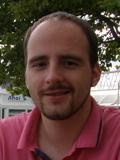Invited Talk by Rostislav Khlebnikov

|
Rostislav Khlebnikov, research assistant and PhD student
Graz University of Technology
- Date: Thursday, 2 February 2012
- Time: 14:30
- Location: MI 03.13.010
|
Crepuscular rays for tumor accessibility planning
Abstract:
In modern clinical practice, planning access paths to volumetric target structures remains one of the most important and most complex tasks, and a physician's insufficient experience in this can lead to severe complications or even the death of the patient. In this paper, we present a method for safety evaluation and the visualization of access paths to assist physicians during preoperative planning.
As a metaphor for our method, we employ a well-known, and thus intuitively perceivable, natural phenomenon that is usually called crepuscular rays. Using this metaphor, we propose several ways to compute the safety of paths from the region of interest to all tumor voxels and show how this information can be visualized in real-time using a multi-volume rendering system. Furthermore, we show how to estimate the extent of connected safe areas to improve common medical 2D multi-planar reconstruction (MPR) views. We evaluate our method by means of expert interviews, an online survey, and a retrospective evaluation of 19 real abdominal radio-frequency ablation (RFA) interventions, with expert decisions serving as a gold standard. The evaluation results show clear evidence that our method can be successfully applied in clinical practice without introducing substantial overhead work for the acting personnel. Finally, we show that our method is not limited to medical applications and that it can also be useful in other fields.
Biography:
Rostislav Khlebnikov is a research assistant and a PhD student in Graz University of Technology. He has received the Bachelor (Hons., 2006) and Master (Hons., 2008) degrees in Applied Mathematics and Computer Science from Saint-Petersburg State Technical University, Russia. During his studies he had also worked as a programmer in a game-development company CREATStudios inc. in Saint-Petersburg for six years and was involved in programming graphics, AI and tools for internal use. Since 2009 he works as a research assistant in Graz University of Technology, focusing on research in scientific and medical visualization.


